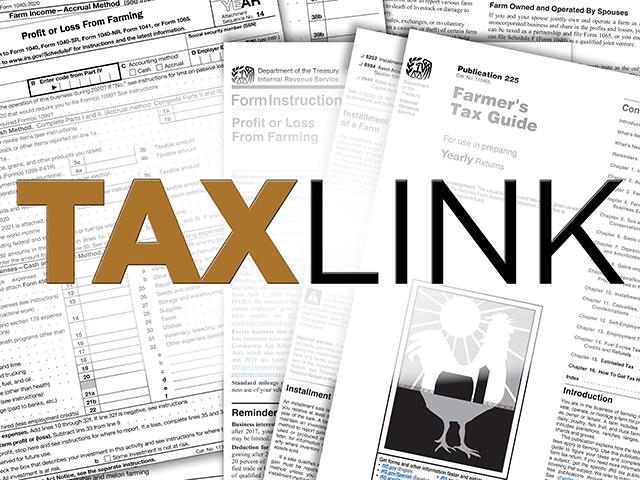Taxlink
Mitigate Tax Issues When It's Time to Exit the Farm
Many of my clients think the writing is on the wall. With a slow decline in commodity prices, high input costs, interest rates approaching double digits and potential trade issues with China, the economics of farming may be more difficult in the coming years. We have seen this cycle before; farmers don't retire because they want one more year of profits only to see their equity evaporate. Luckily, I've noticed more and more of my clients discussing exiting farming in 2023.
What does exiting farming mean? Sometimes, it's transitioning to the next generation; sometimes it's selling off inventory/equipment and collecting rent checks. If you farm as a sole proprietor, it's relatively easy. However, in many cases, family members farm together. Farming in a partnership or S corporation may add complexity (and taxes) when you transition out. Although this is a complex topic, I'm going to briefly touch upon four scenarios to illustrate potential issues.
-- Multimember LLC: one member exiting. In some instances, only one member of an LLC may want to exit. There are multiple ways to structure that exit, including distribution of assets, purchase of LLC interest or redemption of LLC interest. The trap goes back to debt and the dreaded negative capital account. If the exiting member is relieved of debt, he or she may experience forgiveness of debt income. If the exiting member had a negative capital account, it may trigger unexpected (and substantial) taxable income.
-- Multimember LLC: liquidation. When liquidating, the LLC may distribute certain assets to members or sell all assets and distribute the proceeds. In some cases, because of debt or inaccurate accounting, the members may be left with negative capital accounts. In that case, they must contribute cash to the LLC or pick up phantom income to get their negative capital account back to zero dollars. Also, the issue of liquidating distributions must be in accordance with capital accounts. Therefore, one member may get more money from liquidating distributions.
P[L1] D[0x0] M[300x250] OOP[F] ADUNIT[] T[]
-- S corp: one member exiting. S corps are more restrictive than LLCs and may cause more issues. If there are assets the exiting shareholder wants, the S corp can either sell them to the shareholder or distribute the assets. In either case, the S corp must treat it as a sale of assets at fair market value (however, a loss would not be realized), and shareholders must recognize the gain.
-- S corp liquidation. Sometimes, the best solution is to liquidate the S corp and part ways. If liquidation includes distribution of certain assets to shareholders, the distribution is treated as a sale, and gain must be recognized. It is important to liquidate and dissolve the S corp in the same year. That way, if there is any basis remaining, the shareholders could take a capital loss on their tax return to hopefully offset some gain.
I just skimmed the surface and avoided discussing C corporation spin or splits. Exiting or liquidating an LLC or S corp is not as easy as most people think. With a little time and planning, your certified public accountant (CPA) can help you mitigate the tax issues.
**
-- DTN Tax Columnist Rod Mauszycki, J.D., MBT, is a tax principal with CLA (CliftonLarsonAllen) in Minneapolis, Minnesota.
-- Read Rod's "Ask the Taxman" column at https://www.dtnpf.com/…
-- You may email Rod at taxman@dtn.com
[PF_0423]
(c) Copyright 2023 DTN, LLC. All rights reserved.




